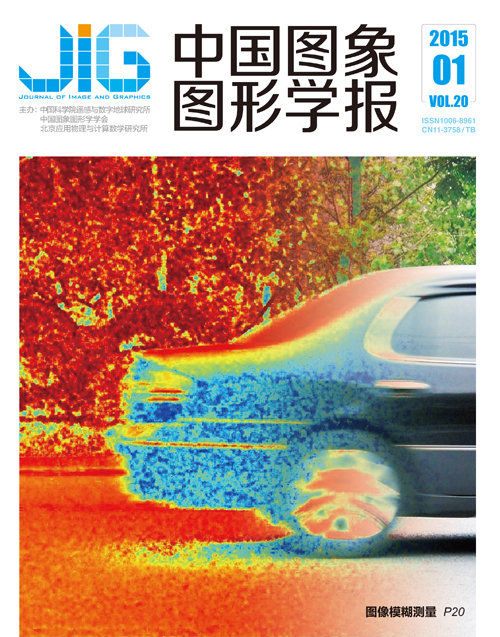
极化SAR相干斑抑制的非局部加权最小均方误差滤波算法
摘 要
目的 相干斑的存在严重影响了极化合成孔径雷达(PolSAR)的影像质量。对相干斑的抑制是使用SAR数据的必不可少的预处理程序。提出一种基于非局部加权的线性最小均方误差(LMMSE)滤波器的极化SAR滤波的方法。方法 该方法的主要过程是利用非局部均值的理论来获取LMMSE估计器中像素样本的权重。同时,在样本像素的选取过程中,利用待处理像素的极化散射特性和邻域块的异质性来排除不相似像素以加速算法,同时达到保持点目标和自适应调节块窗口大小的目的。结果 模拟影像和真实影像上进行的实验结果表明,采用这种方法滤波后影像的质量得到明显改善。和传统的LMMSE算法相比,无论是单视的影像还是多视的影像,本文方法去噪结果的等效视数都高出8视以上;峰值信噪比也提升了5.8 dB。同时,去噪后影像分类的总体精度也达到了83%以上,该方法的运行效率也比非局部均值算法有了较大提升。结论 本文方法不仅能够有效抑制相干斑噪声,还能较好地保持边缘和细节信息以及极化散射特性。这将会为后续高效利用SAR数据提供保障。
关键词
Polarimetric SAR speckle filtering using a nonlocal weighted minimum mean squared error filter
Ma Xiaoshuang1, Shen Huanfeng1, Yang Jie2, Zhang Liangpei2(1.School of Resource and Environmental Sciences, Wuhan University, Wuhan 430079, China;2.State Key Laboratory of Information Engineering in Surveying, Mapping and Remote Sensing, Wuhan University, Wuhan 430079, China) Abstract
Objective The presence of speckle noise degrades the quality of polarimetric synthetic aperture radar (PolSAR) images. Suppressing speckle is an essential preprocessing step when using SAR data. Method In this study, a technique based on a nonlocal weighted linear minimum mean squared error (LMMSE) filter is proposed for filtering speckle in polarimetric SAR images. The concept of nonlocal means is employed in the proposed method to evaluate the weights of the samples in the LMMSE estimator. In the pixel sample selection process, the polarimetric scattering property and heterogeneity of the neighboring patch of the processed pixel are utilized to discard unrelated pixels. The algorithm is accelerated while preserving the point targets and adaptively changing the size of the patch window. Result Experiments on polarimetric SAR images show that the quality of the images filtered by the proposed algorithm is improved. Compared with the number of looks for images filtered by traditional LMMSE filters, that for images filtered by the proposed method increases by over 10 looks for single-look or multi-look speckled images. The peak signal-to-noise ratio is also increased by 5.8 dB. Overall classification accuracy of the filtered images is higher than 83%. The proposed method is more computationally efficient than nonlocal means algorithms. Conclusion The proposed filter effectively reduces speckle and preserves edges, features, and the polarimetric scattering mechanism, and thus, supports the efficient use of SAR data.
Keywords
polarimetric synthetic aperture radar speckle noise nonlocal means linear minimum mean squared error filter
|



 中国图象图形学报 │ 京ICP备05080539号-4 │ 本系统由
中国图象图形学报 │ 京ICP备05080539号-4 │ 本系统由